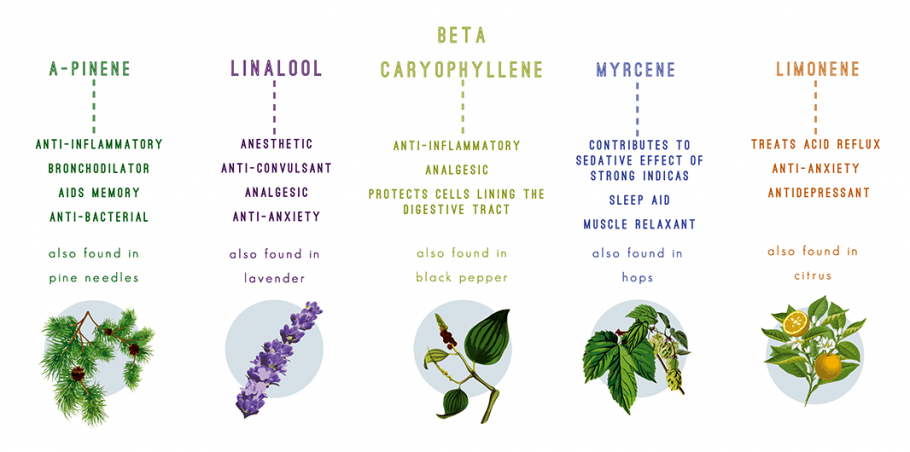Cannabis and hemp testing is a promising new sector with many similarities to the food safety sector. Contrary to the food business, however, the distinctions between pharmaceutical, food, and cosmetic items crisscross for cannabis and hemp products. This poses special difficulties and necessitates specialized knowledge of the cannabis sector to comprehend best-in-class methodologies and strategies.
The need for establishing the potency level and steering the path for the hemp and cannabis industry after the legal estrangement requires strict analytical criteria paired with a variety of matrix problems that have led to the development of intricate methods that reliably detect and quantify target analytes.
Cannabis and hemp difference
In terms of appearance, hemp, and medical cannabis or marijuana are both members of the same species, Cannabis Sativa. Yet, a species can exhibit significant varieties within different cultivars.
Tetrahydrocannabinol, or THC, is the psychoactive substance that distinguishes marijuana from hemp. As hemp only contains 0.3% concentration of THC or less, goods made from hemp won’t give users the typical “high” that marijuana is known for.
What are terpenes in cannabis?
The unique flavor, aroma, and taste of a cannabis strain are a result of its terpene testing profile. Terpenes have two biological functions: they attract pollinators and repel predators. The cannabis plant has more than 100 distinct terpenes, according to research.
The trichomes are the glands that release cannabinoids and terpenes in cannabis plants. They have a remarkable capacity to collaborate with cannabinoids. Moreover, the terpenes have particular impacts. For instance, limonene can improve mood whereas linalool can encourage relaxation. Terpenes can vary with light and temperature and differ from soil to soil for the same cultivar.
Although cannabinoids like THC and CBD have gained much of the limelight in cannabis research, terpenes are chemicals contributing to the plant’s desired impact. The fragrant chemical substances known as terpenes are what give strains like UK Cheese or NYC Diesel their particular flavor and scent. More than 200 terpenes have been identified in cannabis; these substances make up roughly 10% of the trichome content and less than 1% of the actual flower.
Importance of terpenes testing for cannabis
While terpene analysis or taste profiling is sometimes overlooked, it is a crucial component of providing quality and safety assurance for both medical and recreational cannabis. More than 2000 different types of plants, flowers, trees, and other types of vegetation, including cannabis, contain terpenes.
There is mounting evidence that the terpenes present in cannabis-derived products influence the therapeutic effects of cannabidiol (CBD) and tetrahydrocannabinol (THC) on the endocannabinoid system. This affects the product’s ability to produce therapeutic effects like pain alleviation. There is a need to test the terpenes profile of the cannabis sample to invariably understand how the THC will behave post-consumption specifically in states where medical cannabis is still illegal.
Future of terpenes profiling in cannabis testing
It is crucial to comprehend and accurately prescribe medicinal cannabis to patients to give them safe and effective medications, hence it is important to know which terpenes are contained in a specific strain of cannabis. Companies can efficiently conduct terpene and potency testing through gas chromatography methods of testing, which provides a better understanding of the characteristics and caliber of a certain strain.
Challenges faced for cannabis testing in the food industry
- Nascent industry
The reintroduction of cannabis after a disturbed past is still making things difficult for a complete overhaul of the system with established gold standards of testing. However, assuming that the hemp-based products will be either consumed or worn by humans or pet animals, it is necessary to test them for potency, terpenes, and other essential requirements so that products can be marketed once again after clearing the basic requirements of the food industry.
- Diversity in the product line
The cannabis plant is diverse in its profile and even purpose. The extent of the versatility of hemp in diet and supplement products is so fast that testing in singularity for a single parameter is not sufficient. The samples need to be tested for all the parameters to provide safe and standard products. Certain consumables, like drinks, have unrecognized problems with can liners that are intrinsic.
- Homogeneity of cannabinoids
A challenge in testing hemp products is the presence and concentration of cannabinoid levels from plant to plant, different parts of the same plant, samples from plants from the same cultivation, etc. The homogeneity of the cannabinoids in a cannabis plant is lacking and often there are inconsistencies between the various batches of products that are produced from the same source plant. Differences occur due to gaps in the knowledge for production purposes.
What can be done?
Often stakeholders of the industry like licensed growers and cannabis products business owners feel that the lack of a set of rules is an easy way out. However, the blurred lines should give one more impetus to establish the right process through testing. If testing parameters are followed thoroughly, then the chances of rejection of products because of legal reasons lose merit.
It is a good industry to establish their business and take home the advantage of first movers. Hence instead of disregarding the importance of testing and profiling on various parameters, a company can get its samples tested through an accredited lab that follows the established protocols.
Conclusion:
Terpenes like myrcene, limonene, and pinene are responsible for a strong indica-like smell, and citrus and pine flavors aid the responsive action on the effect of other psychoactive cannabinoids.
Working with industry professionals who comprehend customer objectives and the significance of high-quality, quick, and accurate safety testing is crucial in a field that develops so quickly.
Whether you are considering entering this industry, a farmer growing hemp, a business owner, or a consumer, everyone is obliged to follow the legal process of owning cannabis-based products, especially in areas where it is completely disallowed as marijuana. An accredited lab follows all the international standards that are required to establish the business even in the future.

